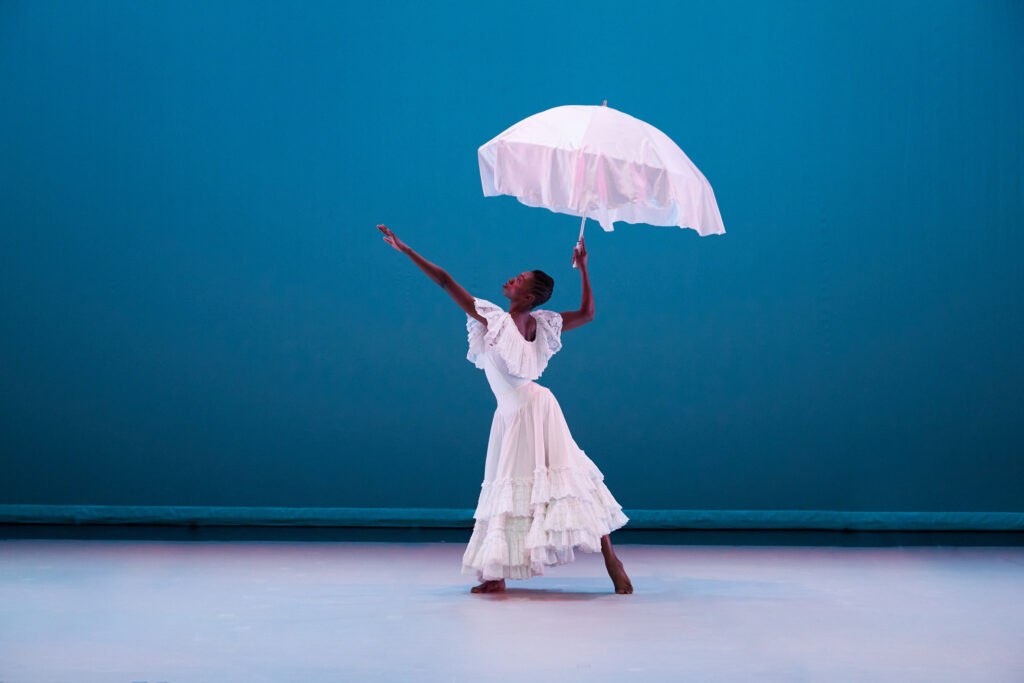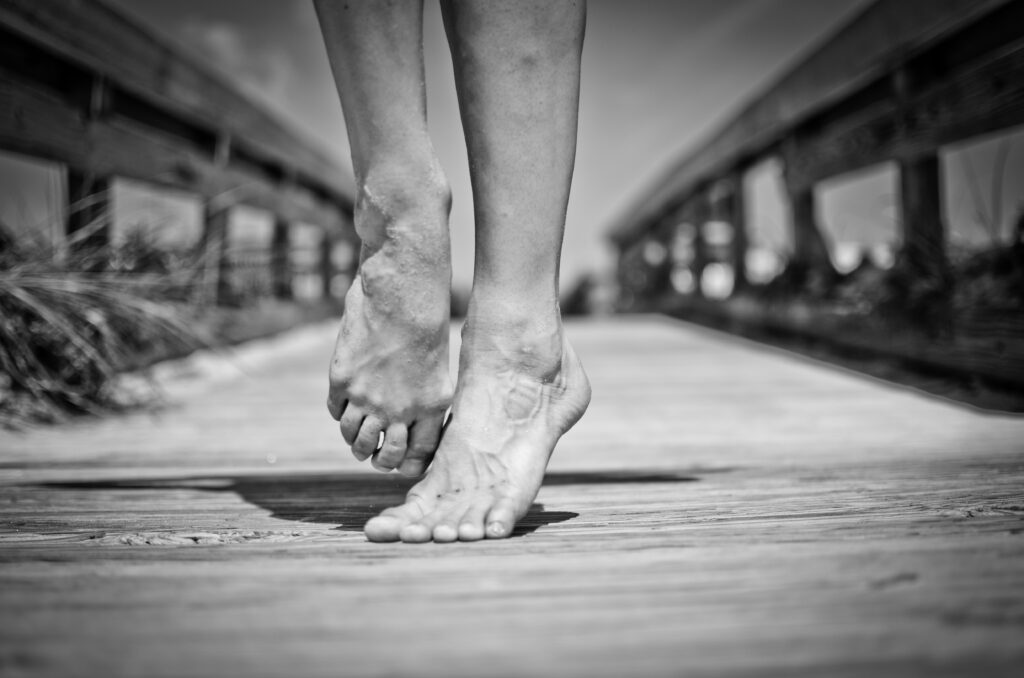
Alice Blumenfeld is primarily a flamenco dancer, but she also has experience teaching modern, Simonson technique, and yoga. Because flamenco is typically performed in heeled shoes, when Blumenfeld began collaborating with choreographer Felise Bagley to create flamenco works for bare feet, she says she had to channel several of the lessons she gives to her students.
“Felise has been studying flamenco with me, and she would take everything I say in flamenco class to get my students to really use their feet and basically regurgitate it back to me when I didn’t have my shoes on,” Blumenfeld says. “All these things about pulling up through the ankles, lifting the arch, massaging the floor—she was like, ‘You say it in class, now you just have to do it without the shoes.’ ”
For dance students who are used to performing in shoes, adjusting to dancing barefoot can bring up new questions, sensations, and ideas. An approach that takes preparation, injury prevention, and somatic cueing into account can help smooth this transition.

Prepare Properly
As with any new skill, it’s important to set students up for success with proper preparation. So Young An, a dancer with the Martha Graham Dance Company, repurposed foot warm-ups from her time as a member of the Korean National Ballet Company to get herself accustomed to dancing without shoes.
“Footwork is the same, like in ballet. I would do exercises, like a tendu, really slowly, but with bare feet, so you can feel all your toes and the bottom of your feet really connected to the floor,” she explains. An also recommends TheraBand exercises for foot articulation, as well as post-dance tools like massage, stretching, and, especially if dancers have dry skin, moisturizing.
Because dancing barefoot can place new stressors on the body, conversations about injury prevention are a must too. Without the sole of a shoe to separate their skin from the floor, dancers might experience more challenges with turning and gliding.
“Dancing barefoot can, with the floor being sticky, trigger knee stuff,” says Khalia Campbell, a dancer with Alvin Ailey American Dance Theater who also has experience with ballet, tap, and musical theater. “Your foot is going one way and your knee can go the other way because of friction from the floor.”

To mitigate the risk of injury, create space for dancers to strengthen their supporting muscles, like glutes and hip abductors, Campbell says. She also encourages teachers to be strict with students about not wearing socks in a barefoot class. Practicing barefoot as much as possible before performance time will help dancers develop the skills (and calluses!) necessary.
“It’s different with socks,” she says. “With socks you can slide, and I think things are easier when you have socks or ballet shoes on. When it’s just your foot against the floor, sometimes the challenge can be just being able to maneuver your body in a way that is easy for you.”
Emphasize Breath and Connectivity
Another way to help your students feel comfortable dancing in bare feet is to delve into somatics. Start class by giving students some time to feel the ground without the distraction of movement, An says.
“They’re just standing straight up, lifted up, but they can feel the ground,” she explains. “Close their eyes, find their balance, be able to get those toes spread out and feel the ground.” This can also be a good time to home in on breath, which can help students connect with the floor and attune themselves to the sensation of groundedness, An adds.
“Breathing is actually really hard to do as an exercise,” she says. “At some point, students will [understand] that each breath connects the toes and the floor.”
Another important aspect of mastering barefoot movement is developing an understanding of full-body connectivity. This awareness will also unlock a breadth of artistic knowledge that dancers can use, regardless of genre or style.

“All dancers pick up foot exercises,” Bagley says. “It’s as you become more in tune with yourself as a whole [you realize], ‘Oh, I’m not just an arm, I’m not just a leg, I’m not just an extension, I’m not just a turn—I’m a whole being and I’m trying to speak with my body.’”





